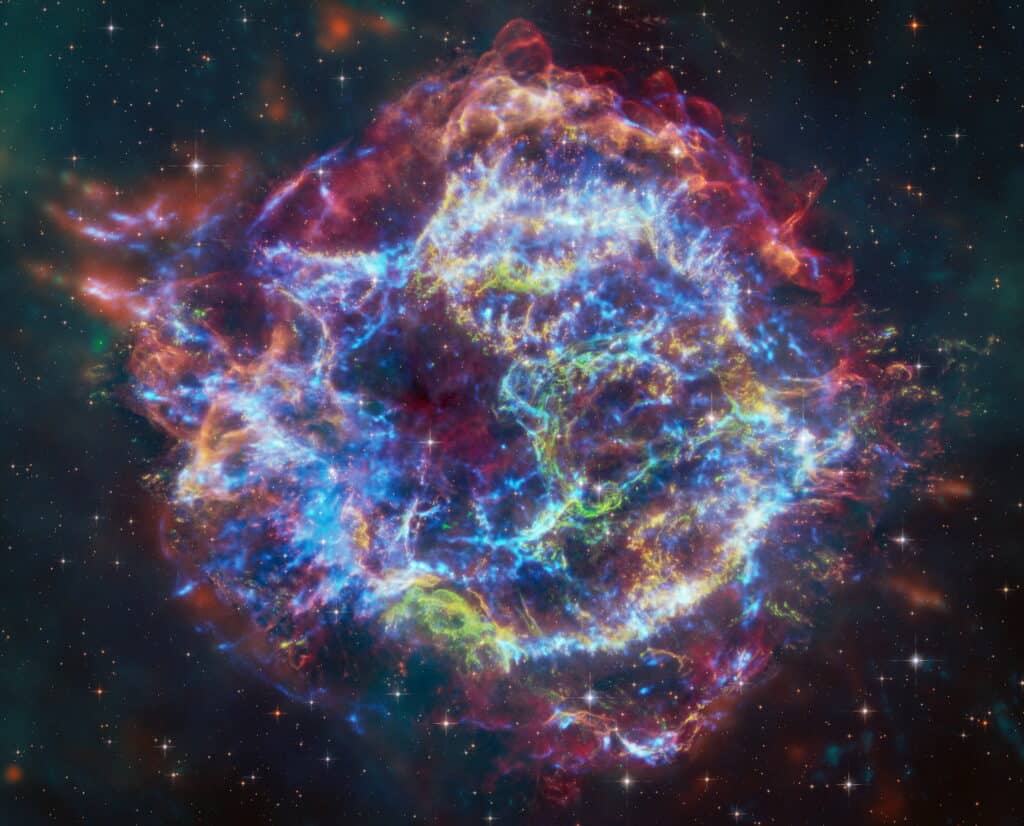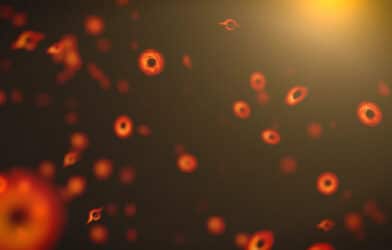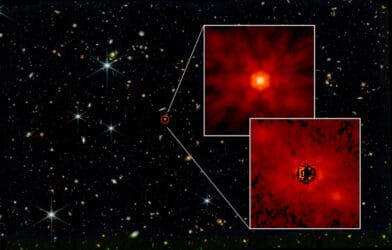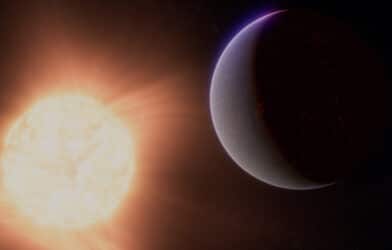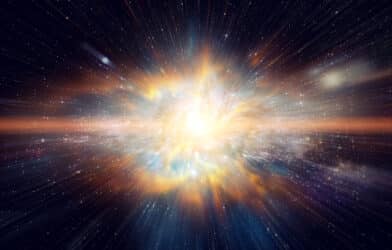Astronomers have made a significant breakthrough in understanding a peculiar structure found in the debris of an exploded star, thanks to data from two NASA telescopes. This discovery sheds new light on the remnants of the star, known as Cassiopeia A (Cas A), and the nature of its explosion.
The curious structure, dubbed the “Green Monster,” was initially spotted in the infrared data from the James Webb Space Telescope in April 2023. Its origins were a mystery until astronomers combined this data with X-rays from the Chandra X-ray Observatory.
“We already suspected the Green Monster was created by a blast wave from the exploded star slamming into material surrounding it,” explained Jacco Vink of the University of Amsterdam, who leads the Chandra work, in a statement. “Chandra helped us clinch the case.”
Approximately 340 years ago, as seen from Earth, a massive star exploded to form Cas A. This explosion produced a ball of matter and light that expanded outward, eventually striking surrounding gas ejected by the star millennia before the explosion. This collision created a fertile environment for dust formation as the ejected stellar material cooled down.
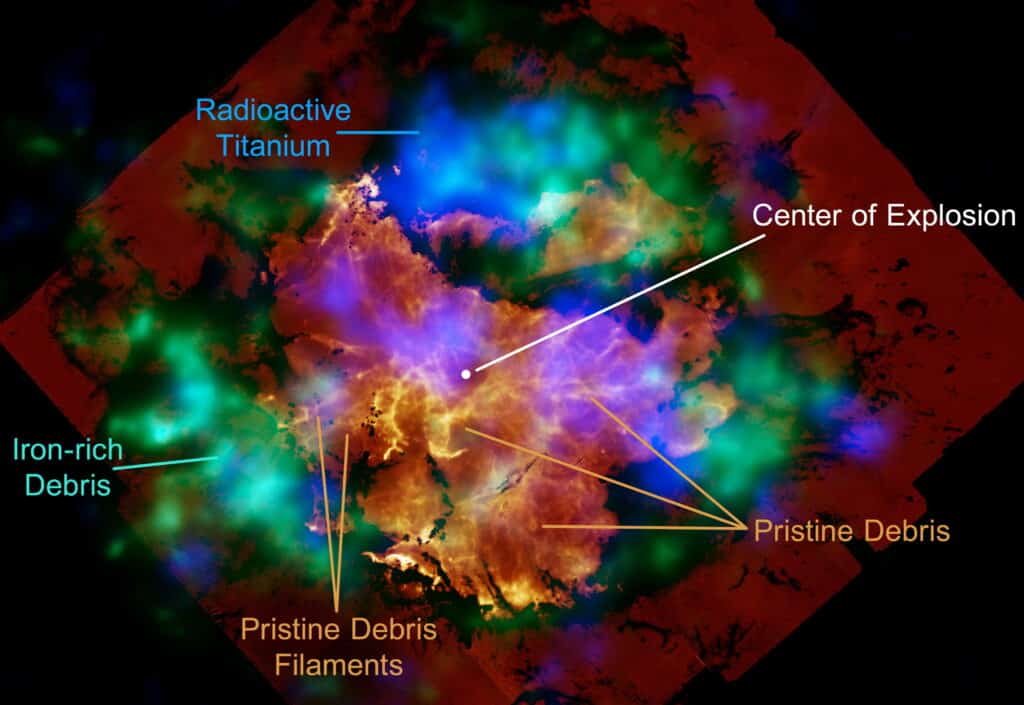
The Chandra data revealed hot gas, predominantly from supernova debris containing elements like silicon and iron, and energetic electrons spiraling around magnetic field lines in the blast wave. These elements are illuminated as thin arcs near the blast wave and are also visible in parts of the interior. The Webb telescope, on the other hand, highlights infrared emission from dust warmed by the hot gas seen by Chandra, and from cooler supernova debris.
In the initial Webb image, the Green Monster was a standout feature. Vink and his team, upon analyzing Chandra data, observed that the filaments in the outer parts of Cas A, from the blast wave, closely resembled the X-ray properties of the Green Monster, including a similar composition with less iron and silicon than the supernova debris. This indicated a shared origin for the Green Monster and the blast wave.
The Chandra data also suggested that the material in the Green Monster is moving towards us, colliding with the star’s ejected gas on the near side of Cas A. The speed of this material is about half that of the average blast wave, hinting at a much higher density in the Green Monster compared to the surrounding material. This finding aids in piecing together the complex history of the star’s mass loss before its explosion.
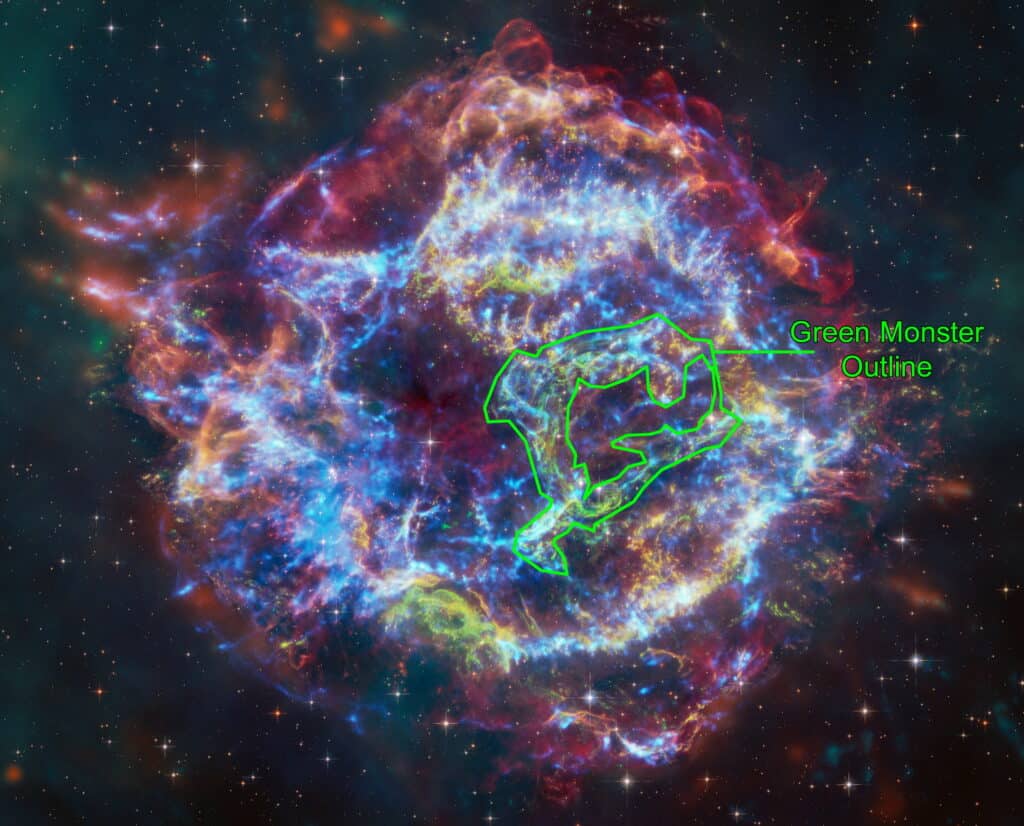
“We concluded that the Green Monster is also part of the blast wave and is photobombing the central part of Cas A rather than being part of it. We then digitally removed the Green Monster from the rest of the image to learn more about what is behind it,” shared Ilse De Looze from Ghent University in Belgium, a co-investigator of the Webb study. “It’s like we were handed a completed, 3D jigsaw puzzle, and we were able to take parts out to see what’s on the inside.”
The debris from the star is visible to Chandra as it is heated to tens of millions of degrees by shock waves, similar to sonic booms from a supersonic plane. Webb can detect material unaffected by shock waves, termed “pristine” debris, much of which lies behind the Green Monster. The combined data from Webb and Chandra provide a more comprehensive view of the debris from the exploded star.
“We’ve made the first map of the web-shaped, pristine debris in the center of this supernova remnant,” said Dan Milisavljevic from Purdue University, who is leading the Webb study. “No one has ever seen structures like this before in an exploded star.”
To further understand the supernova explosion, the team compared Webb’s view of the pristine debris with X-ray maps of radioactive elements created in the supernova, using data from NASA’s NuSTAR and Chandra. This comparison revealed that some filaments of pristine debris are connected to iron seen with Chandra, and radioactive titanium is found where pristine debris is weaker.
These observations suggest that radioactive material seen in X-rays has influenced the formation of pristine debris, creating cavities. The intricate structures in the pristine debris likely originated when the star’s inner layers were violently mixed with hot, radioactive matter produced during the collapse of the star’s core.
“These Webb survey data and initial findings, supported by other telescopes like Chandra, help address unresolved questions about massive star explosions that have broad implications for the formation and evolution of stellar populations, and the metal and dust enrichment of galaxies,” concluded Tea Temim of Princeton University, a co-investigator of the Webb study.
